Do you have two dogs living in your home and one of them seems to be constantly nibbling on the other? If so, you may be wondering why this is happening. It’s important to understand what might be causing it so that you can address the issue and keep both of your canine companions happy and healthy. In this article, we’ll look at some possible reasons why a dog might nibble on another dog as well as how to address the problem.
Isn’t Nibbling Just A Puppy Thing?
Nibbling isn’t necessarily exclusive to puppies. While it may be more common among younger dogs, mature dogs can also engage in this behavior. Nibbling could simply be an expression of affection between two canine friends, or it may indicate that one dog is feeling stressed or anxious and is seeking comfort from the other. It’s important to determine the root cause of your dog’s nibbling so that you can address any underlying issues that might be causing it. [1]
Reasons Why Your Dog Nibbles On Your Other Dog
There are many things that dogs can chew on each other, let’s look at the most popular of them.
It Is Playing
One of the most common reasons why your dog may nibble on another dog is because they are playing. This can be normal behavior among dogs, and it’s important to keep an eye out in order to make sure playtime doesn’t get too rough! If you witness any excessive biting or aggressive behavior, then you should intervene immediately.
Dominance
One of the most common explanations for why a dog may nibble on another dog is as a sign of dominance. Dogs that are more dominant may nibble or even bite at their fellow canine to assert their higher rank in the pack. This behavior can be seen in play, when one dog decides that they want to take control and asserts this power by nipping at the other canine. It is important to note that not all dogs that exhibit this behavior are doing so out of aggression, but it is still important to monitor your pups’ interactions closely and intervene if necessary.
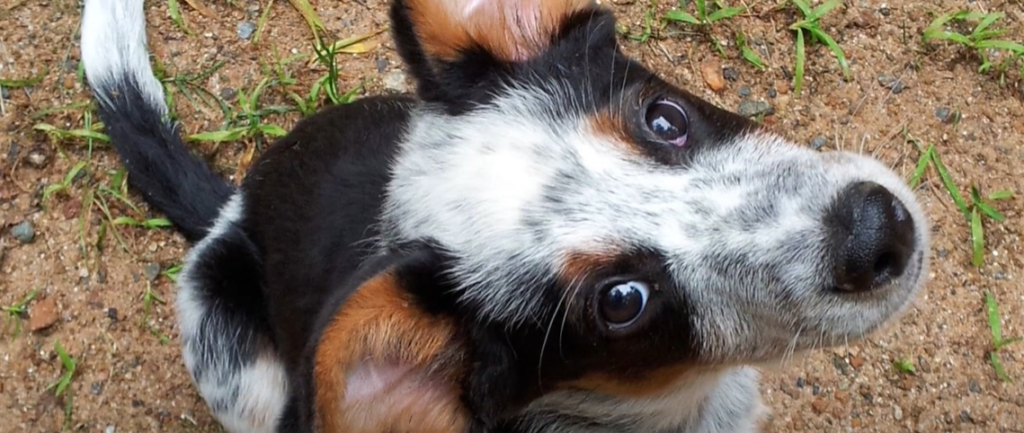
Encouraging The Behavior
Nibbling can be a sign of affection and bonding between dogs, so it’s important to watch for positive reinforcement. When your dog is nibbling on your other dog, you should try to praise the behavior. This will help reinforce the idea that this is a desirable action. You should also give both dogs treats when they are playing together. It may also help if you set up situations in which the two dogs can play together safely. For example, having toys or treats near each other so they can interact without getting too rough or aggressive. Doing activities like going for walks together may also help them bond and have an enjoyable time.
Boredom
One of the main reasons why one dog may nibble on another is boredom. Dogs, just like humans, need outlets to keep them occupied and interested in their environment. If one dog feels bored, they might start nipping or nibbling on the other as a way of getting attention or stimulation. To prevent this issue from happening, make sure both dogs have plenty of toys and activities to keep them entertained and engaged throughout the day. Additionally, taking your dogs for regular walks can help release excess energy that can lead to unwanted behaviors such as nipping or nibbling.
Nature
Nibbling is a natural behavior for dogs, especially puppies. It’s usually harmless and can be seen as a way of playing, exploring the world around them, or seeking attention from humans or other animals. As they grow older, some dogs continue to nibble on other pets out of habit.
Submission
Nibbling is a sign of dominance and submission in the canine world. When one dog nips another, they are trying to establish their position in the pack hierarchy or show that their behavior should be respected. If a young dog is nipping at the older canine, it could be an attempt to show their dominance. On the other hand, if an older dog nibbles a younger one, it may be a sign of submission or affection. [2]
It’s Probably Nothing To Do With Submission Or Dominance
Nibbling on another dog is an innate behavior for many dogs and it doesn’t necessarily have anything to do with submission or dominance. Many canine experts believe that nibbling is a way for dogs to communicate and show affection with one another. It can also be a sign of excitement or playfulness, as well as comfort. Dogs who are accustomed to living in packs may also nip at each other gently as a way of showing they care.
Overall, nibbling between your two dogs is nothing to be alarmed about as long as it is gentle and not aggressive in nature. However, if it becomes too rough or one of the dogs seems anxious or uncomfortable, separate them right away and give them each some space. The best way to ensure that your furry friends stay happy and healthy is to provide plenty of mental and physical stimulation for both of them, as well as plenty of love and affection. With a bit of understanding on your part, you should be able to keep the peace among your four-legged family members!
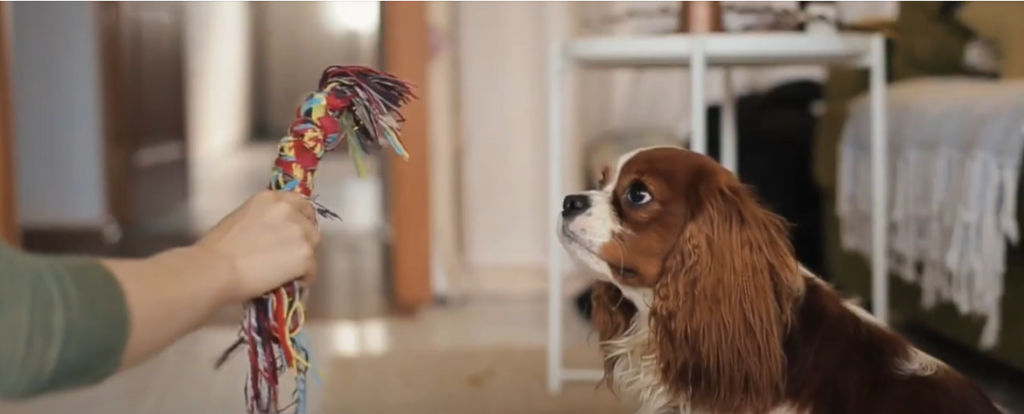
Things To Consider
When two dogs are sharing the same space, it’s important to pay attention to their interactions. If you notice one of your pups nibbling on the other dog, there could be a few different explanations:
If Your Dog Always Did It
If the nibbling has been happening for a while, it’s possible that your dog simply enjoys it. Dogs are social creatures and they often display their affection through physical contact. In some cases, this can be nibbling on another dog – even if it isn’t welcomed by the other animal. If this is the case with your pet, you’ll need to work on teaching them appropriate behavior and not to nip or bite others.
If It Does It More At A Certain Time
If your dog tends to do this more at a certain time, such as when the other dog is eating or sleeping, it could be out of insecurity. Dogs will nip or nibble at another dog to show dominance and assert themselves in their environment. It could also mean that one dog is trying to get the attention of the other or establish itself as the pack leader. This behavior can lead to fights between dogs if it’s not addressed quickly. To stop this type of nibbling, start by redirecting your dog’s focus onto an activity that rewards them for good behaviors like fetching a toy or playing tug-of-war with you instead. You can also use treats and praise to reinforce positive behavior. [3]
Should I Be Worried About My Dog’s Nibbling?
Sometimes, it can be perfectly normal for a dog to nibble on their furry friends. Dogs often express affection with their mouths, and this kind of “play nibbling” is usually harmless. However, if your pup seems to be nipping too hard or it appears that one of the dogs is uncomfortable with the behavior, you should intervene immediately.
It’s important to watch closely while your pups are playing together to monitor any signs of discomfort. Excessive nibbling could lead to injury or even aggression in certain cases. If you notice either of these things occurring, separate them immediately and provide positive reinforcement when they’re behaving appropriately. It’s also wise to consult with a professional trainer if you’re having difficulty managing the situation.
Overall, if your pup only occasionally displays this type of behavior and both dogs seem comfortable with it, there’s usually no need to worry too much.
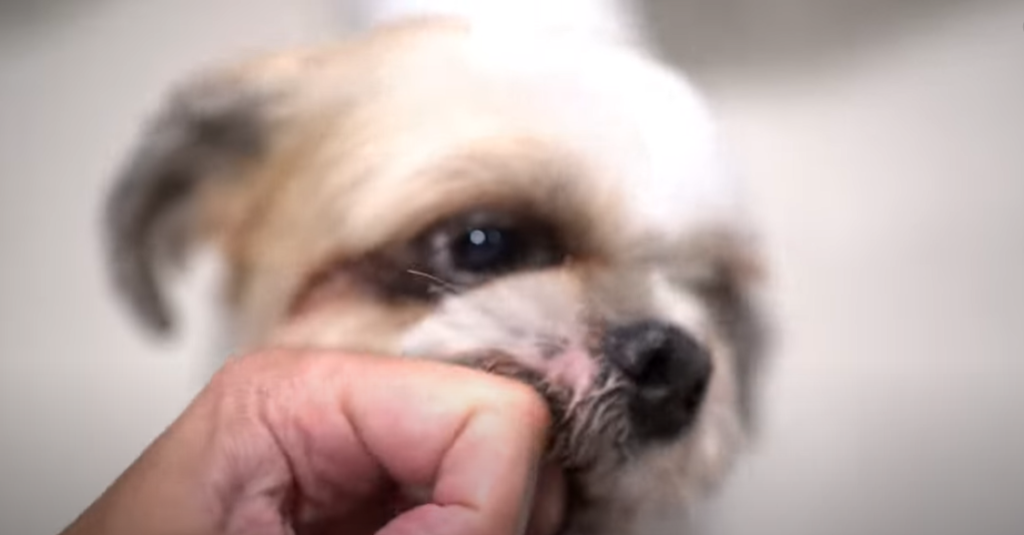
Should I Let My Dog Nibble On My Other Dog?
The act of one dog nibbling on another is actually a common way for canines to communicate their affection. It’s especially common with siblings or when two dogs are first meeting and attempting to establish their relationship. The nibbling behavior is usually limited to light chewing, licking, or gentle mouthing.
In general, you should always be observant when your dogs are interacting. If the nibbling becomes too intense, it’s best to step in and separate the two until they can learn to interact better. If you allow this behavior over time, it can lead to more serious fights and injuries that may not be as easy to manage. [4]
It’s Probably Nothing To Do With Submission Or Dominance
Although some people may think that a dog nibbling on another dog is a sign of dominance or submission, it’s often just an affectionate gesture. Dogs are social animals, so they can show their feelings for each other with physical contact such as licking, gentle nibbling and play bowing. These behaviors may occur when one dog is trying to initiate play or wants attention from the other dog.
Nibbling could also be a way of expressing anxiety. If your dogs have recently been in a stressful situation such as meeting a new person or animal, the nipping behavior could be caused by fear or excitement. In this case, it’s important to keep an eye on your dogs and provide them with reassurance and comfort as needed.
Finally, keep in mind that some dogs simply enjoy nibbling on their companions. If the behavior seems harmless and playful, there’s no need to intervene unless somebody gets hurt or distressed. However, it’s always best to be vigilant when observing any form of physical contact between pets just in case.
What To Do About Your Dog Nibbling On Your Other Dog
If your dog is nibbling on your other dog, there are a few things you can do. Firstly, make sure that both of your dogs are getting enough exercise and stimulation in their daily routine. This will help them to stay active and healthy, as well as reduce any excess energy that may be causing the nibbling behavior.

Avoid Encouraging It
It’s important not to encourage your dog’s nibbling behavior by rewarding it in any way. If you give attention or treats when they are nibbling, they will associate the reward with the behavior and may become more inclined to do it again.
Redirect Its Focus
If your pup is nibbling on another dog, the best way to redirect their focus is to provide a distraction. This can be done through positive reinforcement such as providing treats or a favorite toy. It’s important not to punish your pet for this behavior because it could potentially lead them to become fearful or agitated around other dogs. Instead, try rewarding your pup when they exhibit friendly and appropriate behaviors towards others. Additionally, make sure you are providing enough exercise and mental stimulation throughout the day so that your pup isn’t looking for something else to occupy their time and energy. It can also help if you have separate toys, beds, food and water bowls for each of your pets in order to reduce potential competition between them. If you are worried about the nibbling behavior continuing, consider speaking to a professional dog trainer for additional tips and advice. With consistency, patience and positive reinforcement, your pup will soon learn how to interact with other dogs in an appropriate manner.
Give The Other Dog A Place It Can Go To
If one of your dogs is constantly nipping or nibbling on the other, it could be an attempt to assert dominance. It’s important to give your other dog a safe place or area where they can go if they feel overwhelmed by the nibbling. A crate or designated spot in the house with their own toys can provide some respite when the situation gets too intense. Additionally, providing plenty of opportunities for exercise and playtime can help reduce anxiety levels in both dogs, making them less prone to negative behavior like nipping and nibbling. You should also consider changing up the environment around each of your dogs in order to make them more comfortable. For example, if one dog tends to sleep near another dog’s favorite toy, then you should switch the toy’s location to help keep them from feeling threatened. [5]
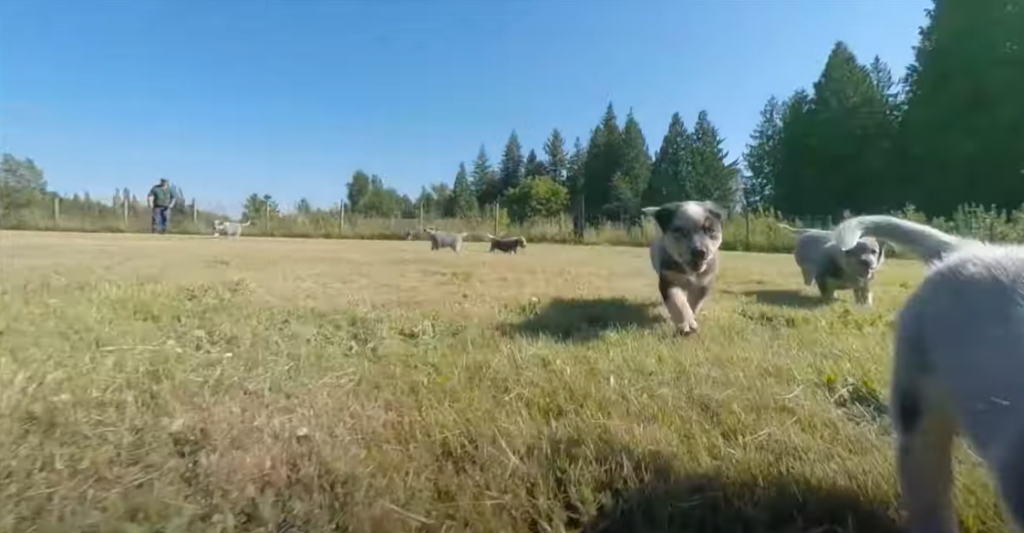
FAQ
Why does my dog nibble on my other dog’s neck?
It is common for dogs to nibble on one another’s neck or fur, particularly during play. This behavior typically indicates that the two dogs are comfortable with each other and it can often be seen as a sign of affection. However, if the nibbling becomes too aggressive then this could indicate an underlying issue such as fear or dominance. It is important to monitor the behavior, and if it does become too aggressive then professional help should be sought. Dogs can also nibble on necks as a form of grooming, so keeping an eye out for any signs of discomfort could indicate that this is the case.
Why does my dog nibble my other dog with his front teeth?
It’s normal for dogs to nibble on their housemates with their front teeth. This behavior is known as “mouthing” and is actually a sign of affection. Some experts believe that it is an instinctive way for canines to initiate playtime activities or just express love and friendship. When your pup mouths his companion, he’s trying to say “Let’s play!” or “I love you!”
What does it mean when dogs nibble each other’s faces?
When dogs nibble each other’s faces, it is usually a sign of friendly behavior and affection. It is often seen in puppies or young dogs as they explore their surroundings and interact with new people or animals. Dogs may also nip and lick another dog’s face if they are trying to get the attention of the other dog or if they are trying to initiate playtime. It is important to note that nibbling can also be a sign of aggression and dominance. If one dog starts nibbling the face of another, but the other dog doesn’t seem interested in interacting, it may be best to separate them until they can learn how to interact appropriately.
How do you tell if dogs are bonded to each other?
It can be difficult to tell if two dogs are bonded to each other, as this type of bond is often established over time through socialization, playtime, and even shared experiences. To evaluate the strength of the bond between two dogs, it is important to look at their interactions with each other. If they seem to enjoy playing together and are very comfortable around each other, it’s likely that the bond between them is strong. Additionally, if two dogs nibble on each other, this can be a sign of affection and an indication that they are bonded. Dogs sometimes demonstrate their love for another dog by licking or nipping at them as a way to show how much they care. This is especially common among puppies, who will often nibble on each other’s ears and faces as a sign of friendship. If two adult dogs are nibbling on each other, it could be a sign that they have formed a strong bond.
Do dogs show love by nibbling?
It is common for dog owners to witness one of their pooches nibbling on the other. This behavior can seem strange and be a cause for concern, but it’s important to understand why this happens before reacting. It turns out that canine nibbling can actually be a sign of affection or love between two dogs!
Do dogs bite each other to show affection?
No, dogs do not typically bite each other to show affection. While nibbling or light mouthing can sometimes be a sign of play or greeting behavior in puppies and young dogs, it is not a sign of affection for an adult dog. In fact, if a dog is nibbling another dog too hard or aggressively, it could be a sign of dominance or frustration.
What does a dog nibbling mean?
Nibbling is one way a dog can communicate with another. It’s often seen in puppies as they explore and play, but it can also be seen in adult dogs when they are stressed or trying to show dominance over another dog. There can be many reasons why a dog might nibble on an other canine companion, ranging from playful behavior to aggression.
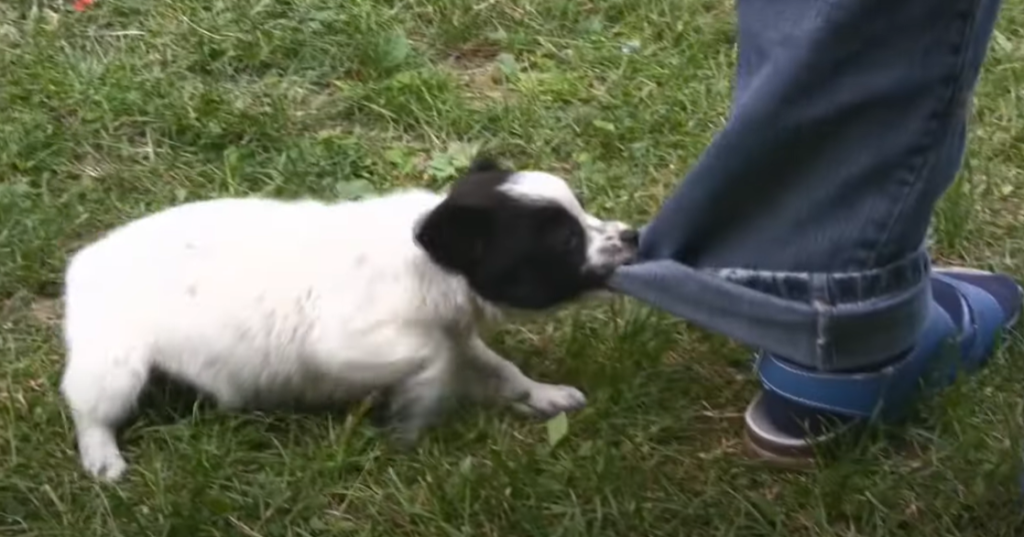
How can you tell if dogs are fighting or playing?
It can be difficult to tell the difference between dogs playing and fighting. A few key signs that your dogs may be fighting include: aggressive body language, snarling or growling, nipping or biting, posturing, and increased intensity of play. It is important to not jump to conclusions when you see two of your dogs engaging in playful roughhousing. However, it is important to monitor their behavior and intervene if needed.
Why do dogs bite each other’s legs when playing?
Dogs are social animals and love to play with each other. When two dogs play together, they may engage in a variety of behaviors, including nipping or nibbling at each other’s legs. This behavior is known as “play biting” and is perfectly normal in healthy pup-pup interactions. Play biting is usually harmless, as it typically involves no more than gentle nibbling and mouthing. If your dogs are play biting each other’s legs in a way that seems too rough, you can intervene by saying “No” firmly and breaking up the play session. Doing this consistently will help teach them to keep their interactions gentler.
Can dogs tell their siblings apart?
It’s not uncommon for dogs to engage in light nibbling or licking of other dogs. This behavior, known as “mouthing” or “nibbling,” is usually seen among puppies and younger dogs—sometimes even between littermates. It typically doesn’t cause any harm but can also be a sign that one dog is trying to assert dominance over the other. However, when it comes to adult dogs, it can be more difficult to tell why your pooches are engaging in such behavior. It may be that they’re simply getting to know each other or enjoying a bit of playtime. But it could also be a sign that they’re vying for dominance. If you observe the nibbling and it’s beginning to cause real damage, you may need to intervene with proper discipline.
How do dogs pick their favorite person?
Dogs are social animals and tend to form strong bonds with their humans. So how do dogs choose a favorite person? It usually comes down to the amount of time spent together, shared activities, and/or attention given. Dogs may also recognize physical characteristics associated with particular people, such as facial features or voice. The most important thing is that the dog feels comfortable and secure in the presence of their favorite person.
Useful Video: Why Does My Dog Nibble on Me? 3 Main Reasons Why your Dog Nibble on You Explained
Conclusion
It is not uncommon for one dog to nibble on their companion dog’s fur. This behavior can be a sign of affection or anxiety, and should be monitored closely to ensure that it does not become aggressive. Knowing why your dog is behaving this way will help you address the underlying issue and create a happy, healthy home for all members of the family. By providing a safe and secure environment, plenty of exercise, and lots of love to both of your furry friends, you can help them form a strong bond that will last for years to come.
References:
- https://notabully.org/why-does-my-dog-nibble-on-my-other-dog/
- https://petdogowner.com/why-does-my-dog-nibble-on-my-other-dog/
- https://dogcare.dailypuppy.com/dog-nibble-his-front-teeth-6715.html
- https://dogsandclogs.com/why-does-my-dog-nibble-on-my-other-dog/
- https://dogdorable.com/why-does-my-dog-nibble-on-my-other-dog/

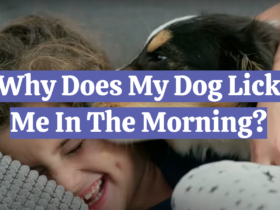
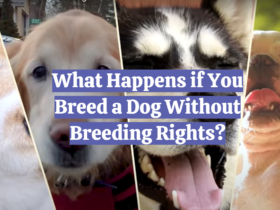
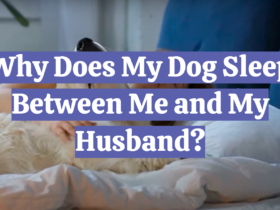
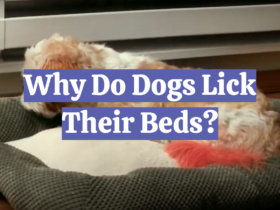
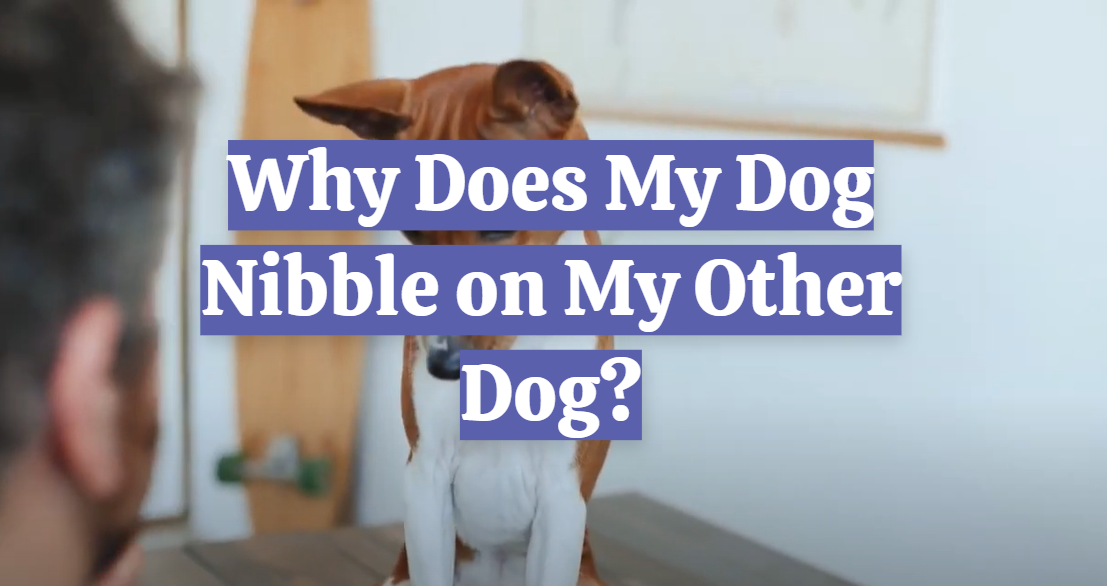
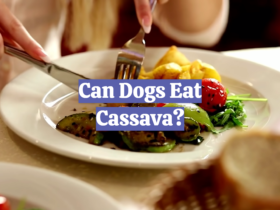
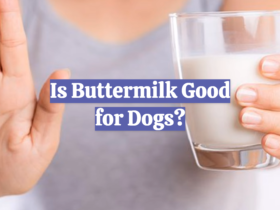
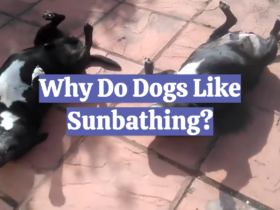
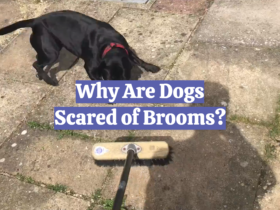
My dogs have an intriguing way of communicating, and I’ve often noticed one nibbling on the other. After some research and consulting with my vet, I learned that this behavior is quite common and usually a sign of affection. It’s their way of showing social bonding and reinforcing their pack dynamics. It seems like a quirky yet sweet way for them to express their connection, and as long as it doesn’t escalate into aggressive behavior, I’ve learned to see it as a part of their unique canine language.
Witnessing my dogs engage in playful nibbling sessions sparked my curiosity about their behavior. Through observation and discussions with a canine behaviorist, I discovered that dogs often nibble on each other as a form of grooming and bonding. It’s akin to how a mother dog might nibble on her puppies. This gentle act is a way for them to establish and strengthen their social bonds within the pack. It’s heartwarming to see my dogs share this affectionate gesture, and it reassures me that they have a strong and positive relationship with each other.
The sight of my dogs nibbling on each other initially raised concerns, but after consulting with a veterinarian, I learned that it’s a common behavior rooted in their wolf ancestry. Dogs, as pack animals, use nibbling as a way to establish hierarchy and strengthen social bonds. In my case, the older dog tends to nibble on the younger one, indicating a nurturing and protective role. Understanding the natural instincts behind this behavior has helped me appreciate the dynamics of their relationship and eased any worries I initially had.
It’s not uncommon to catch my dogs engaging in mutual nibbling, and it turns out, it’s their way of expressing submission and trust. The dog being nibbled on is often showing a sign of deference to the other, emphasizing a harmonious pack order. Observing this behavior has provided insights into their social structure, and it’s fascinating to see how they use nibbling as a non-verbal form of communication. As long as both dogs seem comfortable with the interaction, I’ve learned to embrace it as a unique aspect of their relationship.
When my older dog started nibbling on the ears of the younger one, I couldn’t help but wonder about the reasons behind this behavior. After consulting with a dog behavior expert, I found out that this nibbling could be a way of providing comfort. It’s reminiscent of how puppies find solace in their mother’s presence. In my case, it seems like a nurturing gesture, with the older dog taking on a caregiving role. It’s heartening to witness the compassion and connection expressed through these subtle yet meaningful actions between my furry companions.
The mystery behind why my dogs nibble on each other took me on a journey of understanding their intricate social dynamics. It turns out that nibbling is a way for them to exchange scents and reinforce their bond. Dogs have scent glands in their mouths, and this behavior is a form of communication, like leaving a scented note for each other. It’s their unique way of saying, “You’re part of my pack,” and I’ve come to appreciate it as a charming aspect of their relationship.
Nibbling became a regular scene in my household, prompting me to delve into the canine psyche to decipher its meaning. The revelation was fascinating – dogs often nibble as a sign of playfulness and affection. It’s a way for them to engage in friendly interactions, much like a human handshake. My dogs’ nibbling sessions are filled with wagging tails and soft growls, indicating that it’s a joyous exchange rather than anything worrisome. Understanding the playful nature behind their nibbling has added a layer of joy to our shared moments.
I noticed my dogs engaging in reciprocal nibbling, and it led me to explore the concept of allogrooming in dogs. Allogrooming is a behavior where dogs groom each other as a form of social bonding. It’s not just about cleanliness but also a way for them to express trust and companionship. In my case, the dogs take turns nibbling and grooming each other’s fur, creating a sense of unity within our furry family. It’s heartening to witness this cooperative behavior, reinforcing the strong bonds they share.
Concerns arose when my dog incessantly nibbled on his companion’s paws, prompting me to seek guidance from a professional dog behaviorist. To my relief, I discovered that nibbling on specific body parts can be a display of affection and a way for the nibbler to show care. In this scenario, it seemed like my dog was offering a form of comfort or attention to his friend. Armed with this insight, I now appreciate these moments as instances of empathy and companionship between my furry pals.
The sight of my dogs nibbling on each other’s necks initially puzzled me until I learned about the significance of neck nibbling in canine communication. It’s a gesture rooted in trust and submission, with the nibbler often expressing a sense of vulnerability. My dogs use this gentle nibbling as a way to reinforce their social structure, emphasizing their understanding of each other’s roles within the pack. Witnessing this nuanced form of communication has deepened my appreciation for the intricacies of canine behavior and their ability to convey complex emotions without words.
Nibbling between my dogs has become a regular occurrence, and as I delved into understanding this behavior, I uncovered its roots in early canine development. Puppies often nibble on each other during play to explore their world and establish social bonds. It seems my adult dogs have retained this habit, using it as a way to maintain a sense of connection. It’s fascinating to witness this playful throwback to their puppyhood, and it adds a layer of nostalgia to their interactions.
The nibbling dynamic between my dogs took an unexpected turn when I noticed it primarily happening during times of stress or change. Consulting with a canine behavior specialist shed light on the fact that dogs might resort to nibbling as a coping mechanism. In times of uncertainty, they turn to familiar rituals, such as nibbling on a companion, to seek comfort and security. Understanding this has allowed me to provide additional support during transitions and moments of anxiety, fostering a more harmonious environment.
I observed my dogs engaging in what seemed like reciprocal nibbling, particularly after one returned from the vet. Intrigued, I discovered that this behavior is linked to reconciliation and reaffirming bonds after a period of separation or stress. It’s their way of reassuring each other and rebuilding their connection. Witnessing this post-vet nibbling ritual has become a heartwarming testament to the resilience of their relationship and their ability to navigate challenging situations together.
As my dogs aged, I noticed an increase in nibbling behavior, especially around their ears and necks. A consultation with the vet revealed that this could be linked to joint pain or discomfort. In older dogs, nibbling can serve as a self-soothing mechanism for physical discomfort. It prompted me to be more attentive to their overall health, and incorporating joint supplements into their routine has not only alleviated the nibbling but also improved their mobility and well-being.
The enigma of why my dogs nibble on each other unfolded when I stumbled upon the concept of social grooming. Much like primates groom each other to strengthen social bonds, dogs engage in allogrooming, using nibbling as a way to maintain relationships within the pack. My dogs’ nibbling sessions have become a tangible expression of their camaraderie, emphasizing the importance of social connections in their lives. Understanding this communal aspect of their behavior has deepened my appreciation for the intricate social structures within our canine companions.